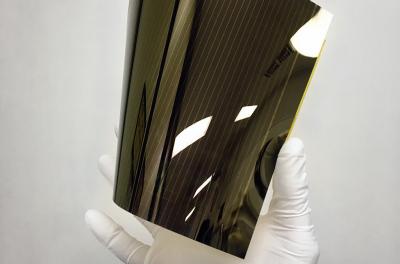Solliance has achieved a new world record for Perovskite Solar Cell technology demonstrated on industrially applicable Roll-to-Roll (R2R) processes of 13.5% conversion efficiency at cell level. The group stressed that the records were achieved in a factory setting, using an industrially scalable process.

Solliance has achieved the conversion efficiency of 13.5% and module-level aperture area conversion efficiency of 12.2% for perovskite-based photovoltaics using industrially-applicable, roll-to-roll production processes. By further optimizing and re-validating processes that were earlier developed buy Solliance, the performance at both the cell and module level have been improved.
In addition, for each zone six 2 x 2 cm2 or 4 cm2 aperture modules, four 3.5 x 3.5 cm2 or 10.5 cm2 aperture modules and one 13 x 12.3 cm2 or 160 cm2 aperture module were produced by implementing a P1P2P3 laser scribe process with 100% yield over all 22 modules. For the modules prepared from the best performing zone, the smaller modules showed a maximum aperture stabilized efficiency of 12.1%, with an average of 11.1% across the six modules. The larger modules achieved a maximum aperture stabilized efficiency of 12.2 % with an average of 11.0% across the four modules and the large module achieved an aperture stabilized efficiency of 10.5%.
All processing steps used low-cost materials and scalable processes at temperatures below 120C. This highlights the potential for cost-effective, high-volume production of perovskite solar cells. The researchers seem to be confident that they will be able to continue improving the process and ultimately produce commercially viable perovskite products at scale.



